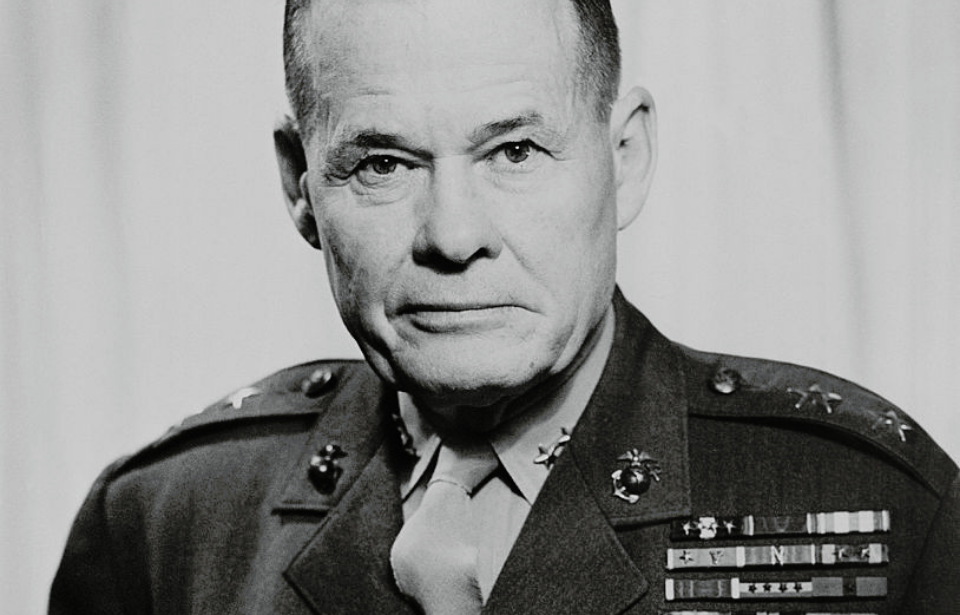Chesty Puller is a name synonymous with the US Marine Corps. The most decorated Marine in the service’s history, he served during three wars and two counterinsurgency campaigns. He’s a topic of legend, and despite passing away in 1971 is still spoken about by new recruits and veterans alike.
Chesty Puller’s early life and entry into the US Marine Corps
Lewis “Chesty” Puller was born on June 26, 1898, in West Point, Virginia. Growing up, he was fascinated with the military, reading books and listening to veterans of the American Civil War. He idolized Thomas “Stonewall” Jackson, a general in the Confederate Army.
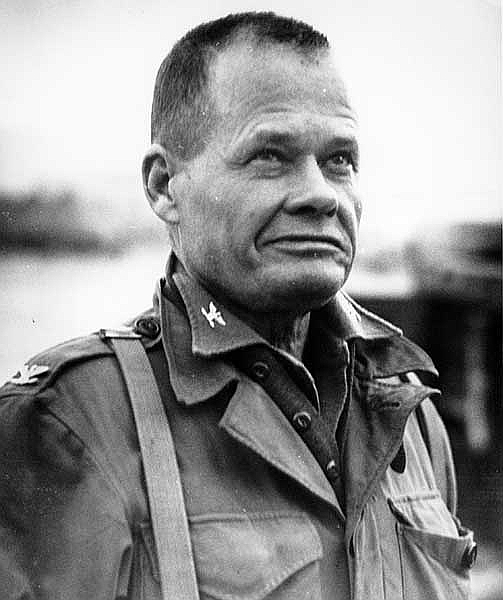
Puller wanted to enlist in the US Army during the country’s Border War with Mexico, but was deemed too young. In 1917, he joined the Virginia Military Institute. With the First World War still raging in Europe, he left the institute, saying he wanted to “go where the guns are!”
Inspired by the Marines who’d fought in the Battle of Belleau Wood, Puller joined the Marine Corps as a private. He attended boot camp at the Marine Corps Recruit Depot, Parris Island. While he didn’t see action during the war, he attended the Non-Commissioned Officer School and Officer Candidates School in Quantico, Virginia.
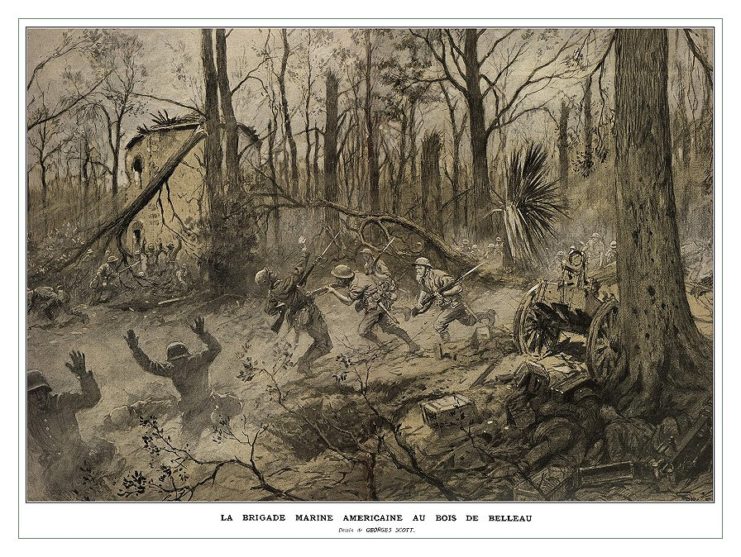
After graduating from Officer Candidates School in June 1919, Puller was appointed a second lieutenant in the reserve. However, the end of WWI led to a force reduction, and just 10 days later he was put on inactive service, with the rank of corporal.
Chesty Puller and the US occupation of Haiti
Chesty Puller finally saw action during the US occupation of Haiti. He was ordered to serve as a lieutenant in the Gendarmie d’Haiti, and over five years participated in more than 40 engagements with Caco rebels. Some of these were planned, while others occurred during supply runs.
Puller succeeded in Haiti thanks to Gendarmie officials who gave him insight into how the rebels conducted their guerrilla warfare. He was told it was best to locate bands of Cacos at night, as they hid during the day. This led to an increase in night patrols.
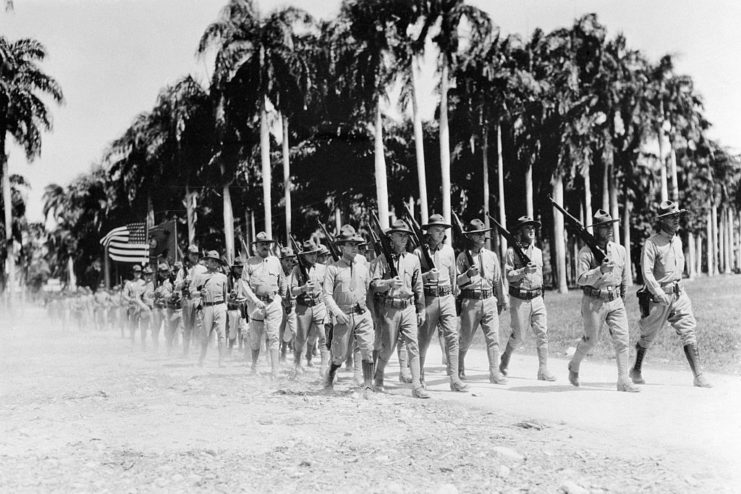
The Caco rebellion began to falter on May 19, 1920, following the death of its leader, Benoît Batraville. The last of their higher-ups surrendered a month later and, in 1921, a government commander declared Haiti to be “completely tranquil.”
US occupation of Nicaragua
In December 1928, Chesty Puller was assigned to the Nicaraguan National Guard. He was given control of M Company, and over the next few years conducted a number of patrols and raids. For his service, he received his first Navy Cross.
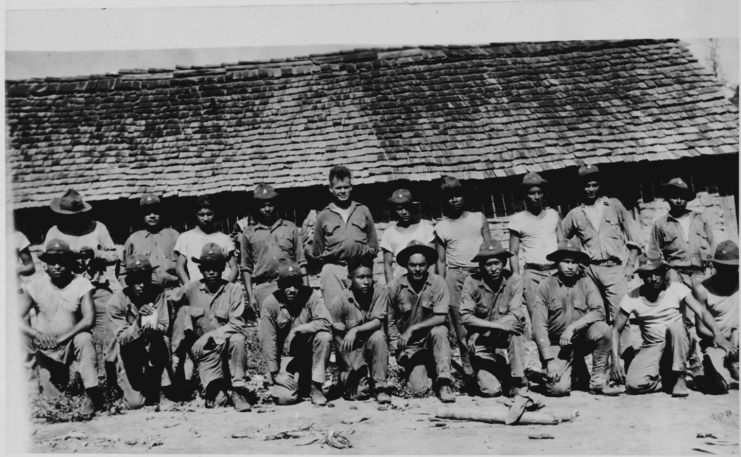
By July 1931, Puller was back in the US, completing a year-long Company Officers Course at Fort Benning, Georgia. Back in Nicaragua, he participated in the battles of Agua Carta and El Sauce. The latter was the final offensive of the US occupation.
On December 26, 1932, there were rumors that Sandinista rebels were planning an attack on a ceremony dedicated to the completion of the León-El Sauce railway. Puller and his expedition were ambushed by rebels, leading to an engagement. The men were able to push them back, and the ceremony occurred two days later.
Chesty Puller’s service after Nicaragua
Following his service in Nicaragua, Chesty Puller was assigned to the Marine detachment at the American Legation in Beijing, where he commanded a unit of China Marines. He then served aboard the USS Augusta (CA-31), a cruiser in the Asiatic Fleet under the command of then-Captain Chester W. Nimitz.
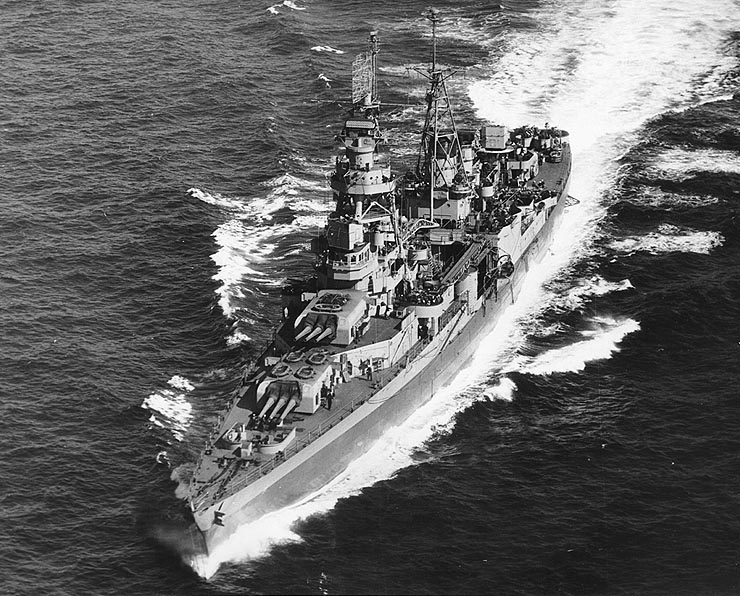
Puller returned to the Augusta in 1939 as commander of the onboard Marines. He then went back to China, where he served as the executive and commanding officer of the 2nd Battalion, 7th Marines, 1st Marine Division, stationed out of New River, North Carolina – later Camp Lejeune.
Actions during the Guadalcanal Campaign
With plans to enter the Pacific Theater during World War II, the 7th Marines were assigned to the 3rd Marine Brigade and sent to Samoa in May 1942. They were then redeployed to the 1st Marine Division on Guadalcanal.
Not long after arriving on Guadalcanal, Chesty Puller led an offensive during the Second Battle of Matanikau, during which his three companies were surrounded by a larger contingent of Japanese soldiers. At risk to his own life, Puller ran to the beach, signaled the USS Ballard (DD-267) and directed it to provide fire support while landing craft rescued the Marines.
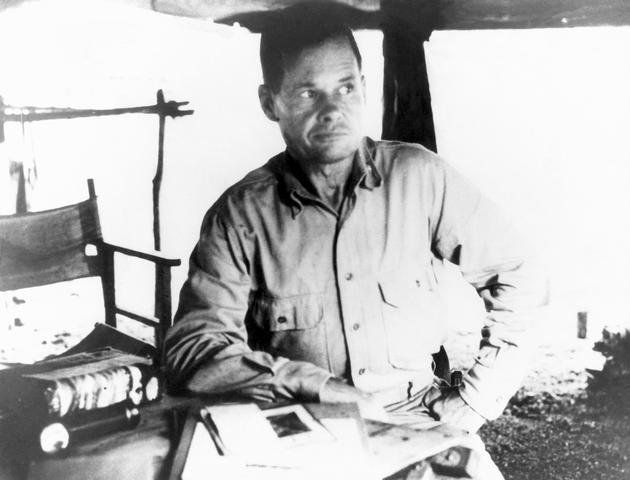
For his actions, Puller was awarded the Bronze Star with Combat “V.” He later received his third Navy Cross during the Battle for Henderson Field. The American forces held the airfield, suffering only 70 casualties. The Japanese, on the other hand, saw 1,400 dead.
Service during the latter half of World War II
In December 1942, with their strength lessened, the 7th Marines were relieved by an Army regiment. After some downtime in Australia, Chesty Puller was made the regiment’s executive officer. During the Battle of Cape Gloucester, he was awarded his fourth Navy Cross for leading a successful attack against Japanese defense positions.
On February 1, 1944, Puller was promoted to colonel, and by the end of the month was commander of the 1st Marine Regiment. Between September and October 1944, he led the 1st Marines during the Battle of Peleliu, one of the bloodiest engagements in Marine Corps history. The regiment was tasked with taking Umurbrogol Ridge, at the heart of the Japanese position.
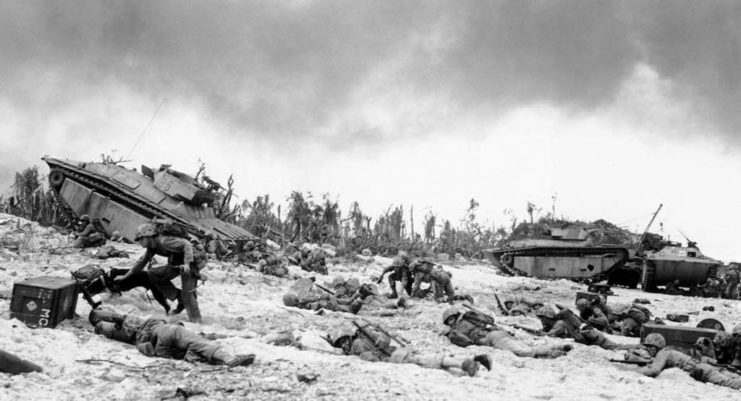
The 1st Marines lost 1,749 men during the assault, forcing the commanding officer of the Marine Corps to order the 1st Marine Division’s commanding general to pull the regiment. For his actions during the battle, Puller was awarded the Legion of Merit.
Upon returning to the US in November 1944, Chesty Puller was named executive officer of the Infantry Training Regiment at Camp Lejeune. Two weeks later, he was promoted to commanding officer. He held this position until the end of the war, after which he was made director of the 8th Reserve District in New Orleans.
Chesty Puller’s service during the Korean War
At the onset of the Korean War, Chesty Puller was again assigned command of the 1st Marine Regiment. He took part in the amphibious landing on Inchon, for which he was awarded the Silver Star, as well as various assaults between September 15 and November 2, 1950. He received his second Legion of Merit for his actions during this time.
Puller was also awarded the Distinguished Service Cross, and during the Battle of Chosin Reservoir received his fifth Navy Cross. The engagement is infamous for the relentless waves of Chinese soldiers that attacked the UN forces. It was during the battle that Puller said his famous phrase, “We’ve been looking for the enemy for some time now. We’ve finally found him. We’re surrounded. That simplifies things.”

In January 1951, Chesty Puller was promoted to brigadier general and temporarily assigned as the assistant division commander (ADC) of the 1st Marine Division. However, as his superior was transferred, he was left in command of the division until March.
Puller returned to the US in May 1951. He was disillusioned with the war and what he believed was the poor preparation of combat units. This didn’t, however, stop him from pushing for tougher training procedures.
Retirement and legacy
Following Korea, Chesty Puller took command of the 3rd Marine Division at Camp Pendleton, California. He was later promoted to ADC, serving in the role until June 1952. He then took control of Troop Training Unit Pacific, an amphibious training group stationed out of Coronado, California.
After being promoted to major general in September 1953, Puller took command of the 2nd Marine Division at Camp Lejeune, later becoming Deputy Camp Commander. He held this position until late 1955, when he suffered a stroke. After a hospital stay, the US Navy’s medical board deemed him unfit to serve. He was subsequently discharged and given the honorary rank of lieutenant general.

Puller left behind an everlasting legacy. The most decorated Marine in the service’s history, he was the only one to receive five Navy Crosses. Embodying his “lead by example” motto, he lived with his men, adhered to the “K” rations diet and carried his own gear. In combat, he refused amenities, and when training carried his own pack and bedding.
To honor him, the Marine Corps’ official mascot was nicknamed “Chesty.” The Navy also commissioned two ships named for him, the USS Lewis B. Puller (ESB-3), a mobile sea base used for naval support and in littoral special operations, and the FFG-23, a guided-missile frigate.
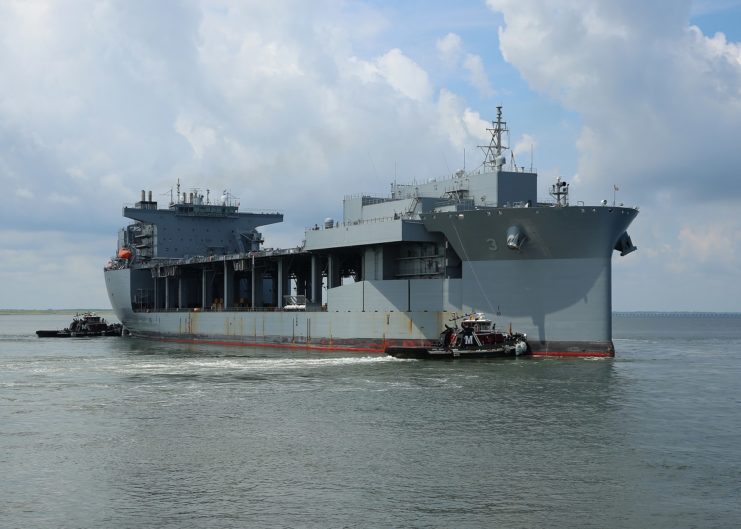
Puller lived a quiet life following his retirement, settling in Saluda, Virginia. His son, Lewis Puller Jr., followed in his footsteps and enlisted in the military. While serving in Vietnam in 1968, he stepped on a booby-trapped artillery shell, resulting in severe injuries. He later wrote a Pulitzer Prize-winning autobiography, and died by suicide in 1994.
Chesty Puller passed away on October 11, 1971, after suffering a series of strokes. He was laid to rest at Christ Church Parish Episcopal, next to his wife.
